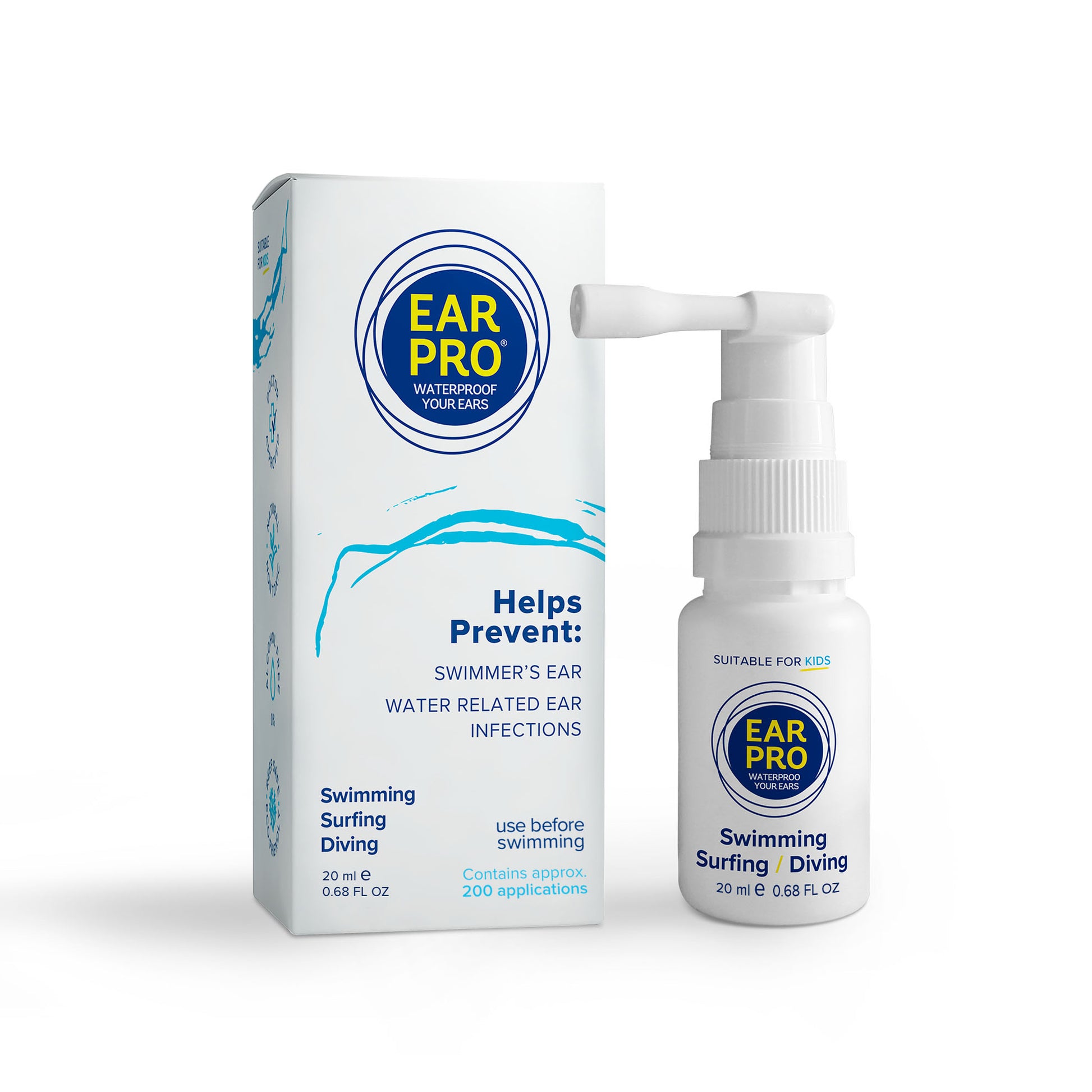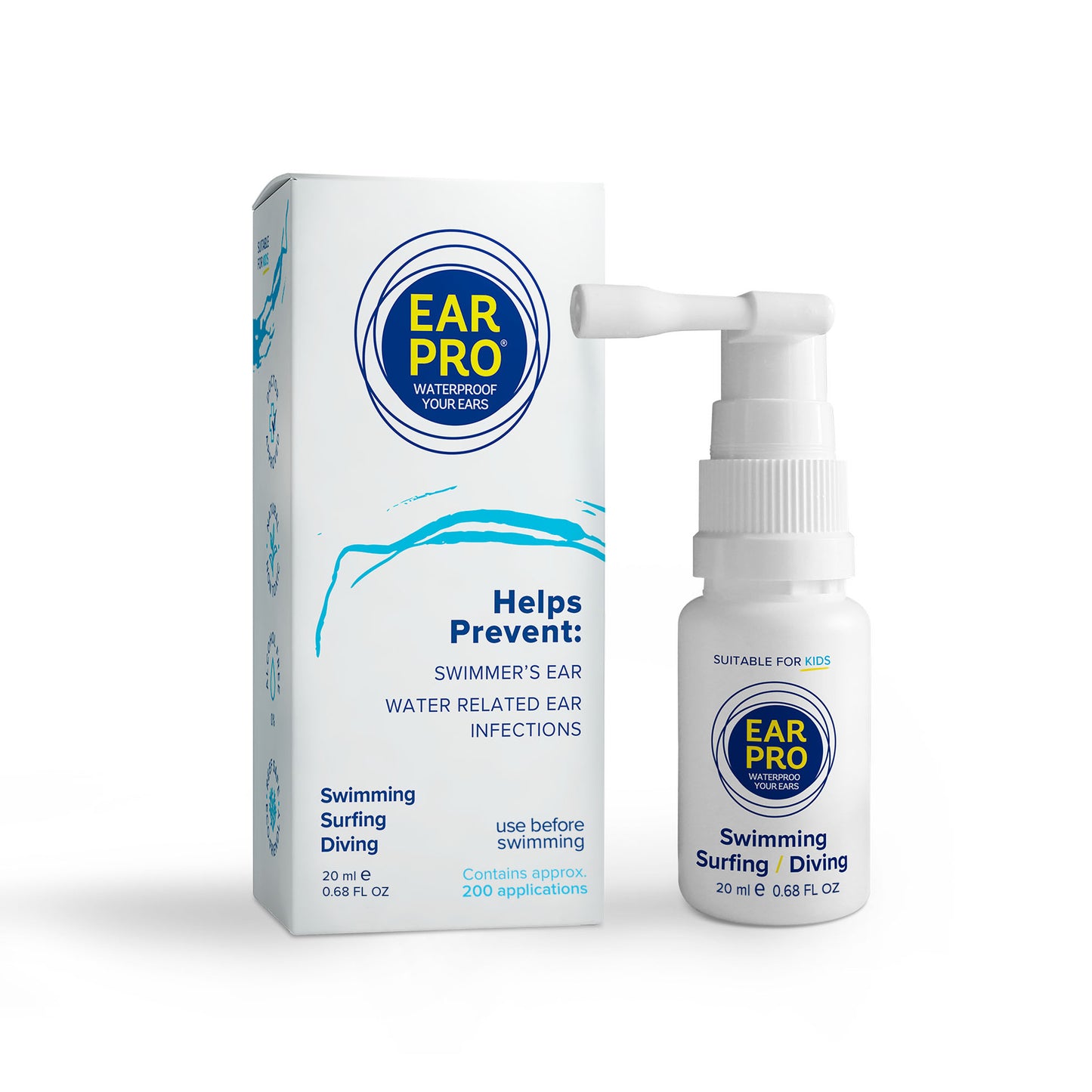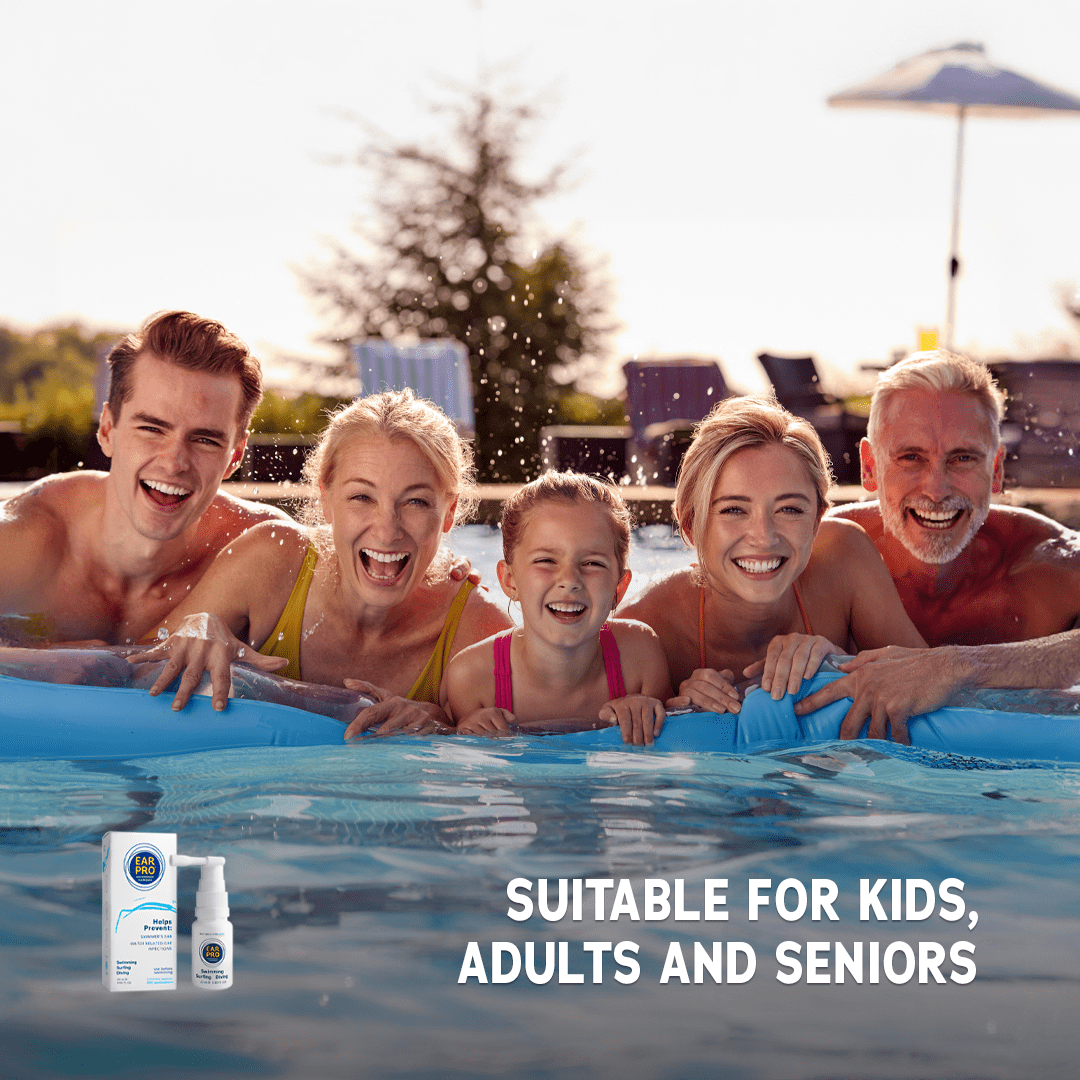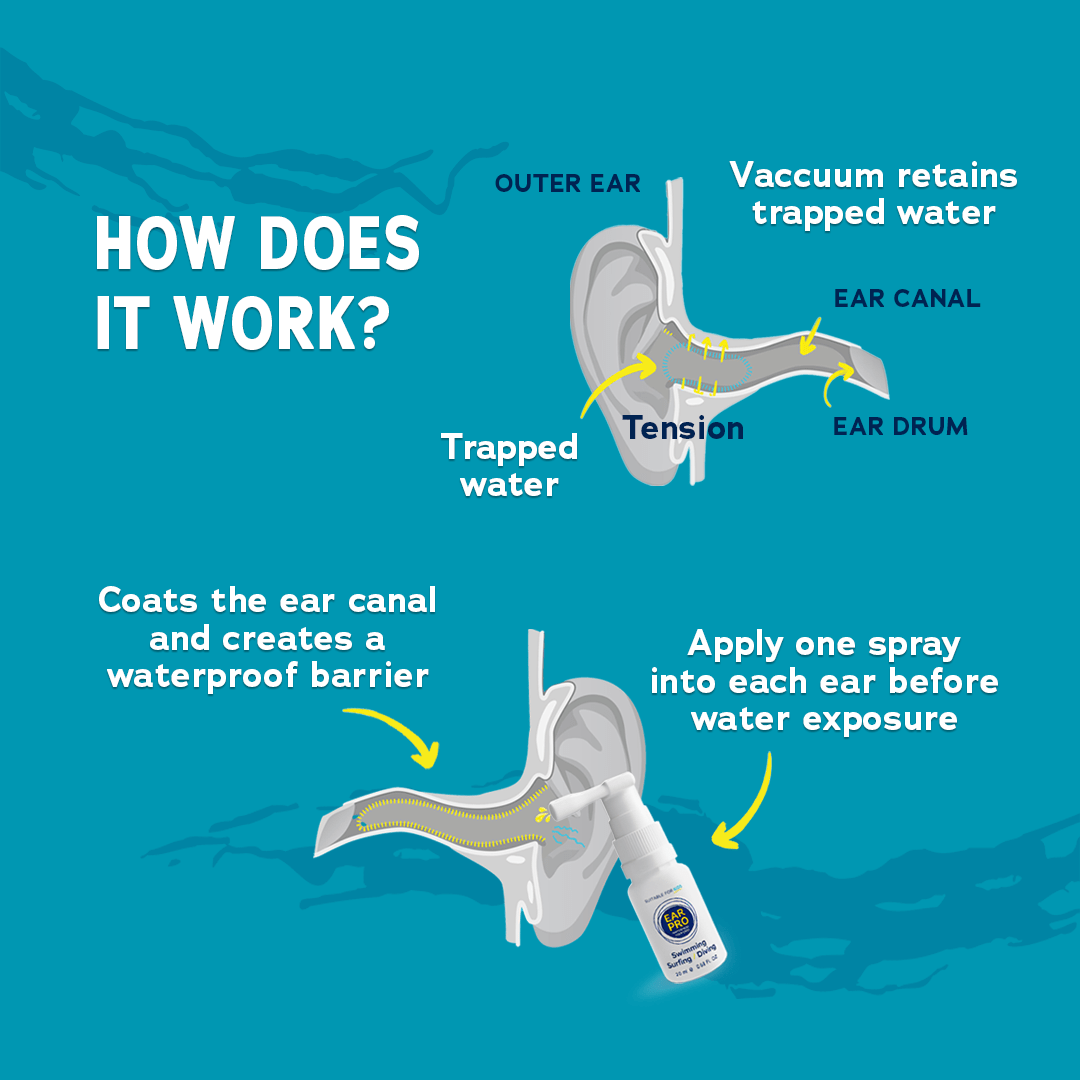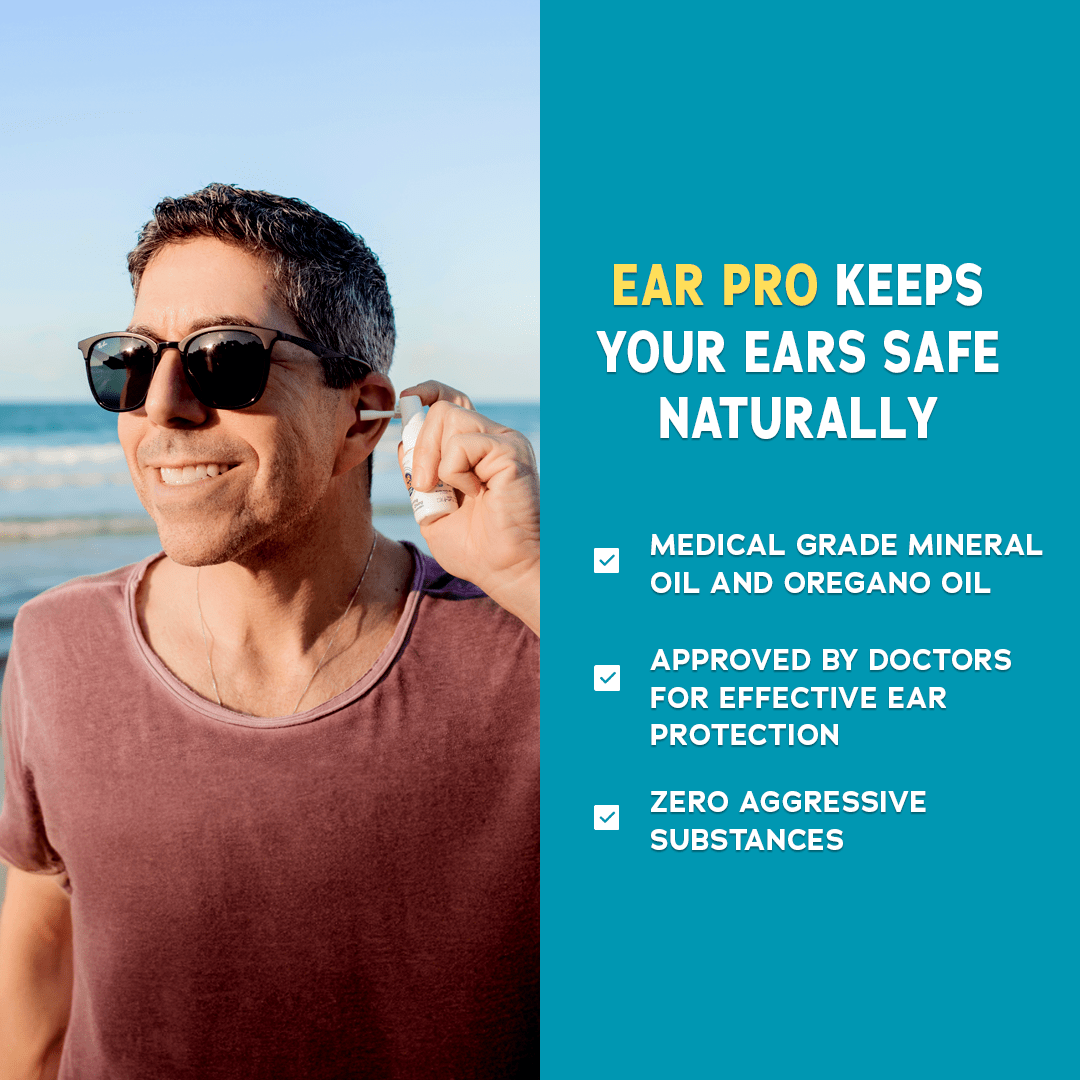When enjoying water activities, taking care of your ears is essential to prevent discomfort or potential health issues. This guide will discuss the different types of ear protection available for water activities and how to choose the right fit for your needs. Whether you are a casual swimmer or a water sports enthusiast, finding the right ear protection can significantly impact your overall experience.
Since millions enjoy swimming and water sports each year, it's crucial to understand the functionality of various types of ear protection to prevent infections like otitis externa (Swimmer’s Ear). This serious condition, characterized by pain, itching, and infections, results from prolonged exposure to waterborne bacteria.
Choosing the right ear protection is the first step to preventing infections like Swimmer’s Ear. Let’s explore the pros and cons of various ear protection products available on the market so you can dive deep into the water without worrying about your ear health.
Types of Ear Protection for Water Activities
The key to a fulfilling water adventure lies in selecting the perfect ear protection tailored to your specific needs and preferences. With an array of options at your fingertips, the choices are ample. Let’s dive into the best ear protection products for water activities to keep your ears safe and comfortable.
1. Waterproof Earplugs: Essential for Swimmers
Waterproof earplugs are a popular choice for ear protection when swimming. They prevent water from entering the ear canal, reducing the risk of infections.
Pros:
- Silicone Earplugs: Soft and moldable, these earplugs fit snugly in your ear
- Pre-Molded Earplugs: Made from durable materials, they come in various sizes for a good fit
Cons:
- They may not fit everyone perfectly, leading to discomfort or leakage
2. Custom Waterproof Ear Protection
Custom waterproof ear protection is the best option for a personalized fit. These earplugs are molded to the shape of your ear, providing maximum comfort and effectiveness.
Pros:
- Perfect Fit: Custom earplugs stay in place and provide superior protection
- Long-Lasting: Made from high-quality materials, they are durable and reusable
Cons:
- They are more expensive than regular earplugs
3. Earbands and Headbands: Extra Security
Earbands and headbands add an extra layer of security, especially in turbulent water conditions. They keep earplugs in place and provide additional protection against wind and cold.
Pros:
- Easy to Use: Wear them over your ears and head
- Additional Warmth: They help keep your ears warm in cold water
Cons:
- They can be uncomfortable for long periods
4. Ear Sprays: A Modern Alternative
Ear sprays like Ear Pro provide a convenient and effective solution for ear protection when swimming. Ear Pro combines medical-grade mineral oil with organic oregano oil, creating a water-repellent barrier in the ear canal. A single application provides all-round protection for 2 hours of continuous water exposure.
Pros:
- Hydrophobic Layer: Prevents water from being trapped, reducing the risk of infections
- Antimicrobial Properties: The oregano oil helps fight bacteria and fungi without disrupting the natural ear flora
- Easy Application: The spray applicator ensures a quick and even coating inside the ear
Cons:
- May need to be reapplied frequently for prolonged water activities
You can also explore our detailed guide on effective ways to keep water out of your ears while swimming.
Choosing the Right Ear Protection for Water Activities
Selecting the right ear protection for water sports involves considering several factors:
- Activity Type: Different activities require different levels of protection. For example, diving may need more secure earplugs than casual swimming
- Comfort: Ensure the ear protection is comfortable, especially for long-term use
- Effectiveness: Look for products that offer proven swimmer's ear prevention
Choosing the right ear protection can make all the difference in enjoying your water activities safely and comfortably.
Choosing the Right Ear Protection for Kids
Selecting the right types of ear protection for kids involves several key considerations to ensure their safety and comfort in the water:
- Comfort: Choose ear protection that is comfortable for children’s sensitive ears. Avoid products that may cause irritation or discomfort
- Security: Earplugs for kids can easily get lost during vigorous activities. Consider alternatives that provide a more secure fit
- Alcohol-Free Products: Opt for alcohol-free products like Ear Pro for ear protection. These products maintain the natural pH balance of the ear and do not dry out the skin, making them better for kids
- Natural Ingredients: Consider ear protection that uses natural ingredients. Ear Pro uses natural ingredients like pharmaceutical-grade mineral and oregano oil, which creates a water-repellent barrier, preventing it from getting trapped in your ears and causing infections
For more detailed advice, check out our tips on ear protection for kids.
Caring for Your Ears After Swimming
Taking care of your ears goes beyond selecting the right types of ear protection. It's also important to use swimmer's ear protection products. Here are some tips for ear care after swimming:
- Dry Your Ears: Gently dry your ears with a towel. Tilt your head to help drain any trapped water
- Use Ear Sprays: Alcohol-free ear sprays, like Ear Pro, can help maintain ear health without drying out your skin. The benefits of mineral oil for ear protection include creating a water-repellent layer that prevents infections
- Check for Earwax Build up: Regularly check for and gently remove any earwax build-up to avoid blockages
- Protect Ears from Irritants: Keep your ears safe from irritants such as chlorine and salt by rinsing them with clean water after swimming
Conclusion
Choosing the right types of ear protection for water sports is essential for enjoying water activities safely. For a convenient and natural solution, try Ear Pro. With its 100% natural ingredients and easy application, Ear Pro provides effective protection for all ages, proving the ideal choice for your family's ear care needs.
Whether you prefer waterproof earplugs, customized waterproof ear protection, or innovative ear sprays, finding the perfect fit can make all the difference in preventing ear infections and discomfort.
FAQ
1. What types of ear protection are best for swimming?
The best types of ear protection for swimming include:
- Waterproof Earplugs: Silicone or pre-molded earplugs prevent water from entering the ear canal
- Custom Waterproof Ear Protection: Tailored to fit your ear shape, offering superior comfort and effectiveness
- Ear Bands and Headbands: Provide extra security and keep earplugs in place, especially in rough water conditions
- Ear Sprays: Alcohol-free ear sprays like Ear Pro create a water-repellent layer in the ear canal
2. How can I prevent swimmer’s ear?
To prevent swimmer’s ear:
- Use Waterproof Ear Protection: Choose from earplugs, custom ear protection, or ear sprays
- Keep Ears Dry: Dry your ears thoroughly after swimming
- Use Ear Drops: Consider ear drops to help remove any remaining moisture
- Avoid Inserting Objects: Don’t use fingers or cotton swabs inside your ears
3. Are custom earplugs worth it for water activities?
Yes, custom earplugs are worth it for water activities because:
- Perfect Fit: They are molded to your ear shape, ensuring a snug fit
- Comfortable: Made from high-quality materials, they are comfortable for long-term use
- Effective: Provide superior protection by staying securely in place
4. How do I clean and maintain my waterproof ear protection?
To clean and maintain your waterproof ear protection:
- Rinse After Use: Rinse earplugs with clean water after each use
- Dry Thoroughly: Make sure they are completely dry before storing them
- Check for Wear: Regularly inspect for any signs of wear and replace if necessary


